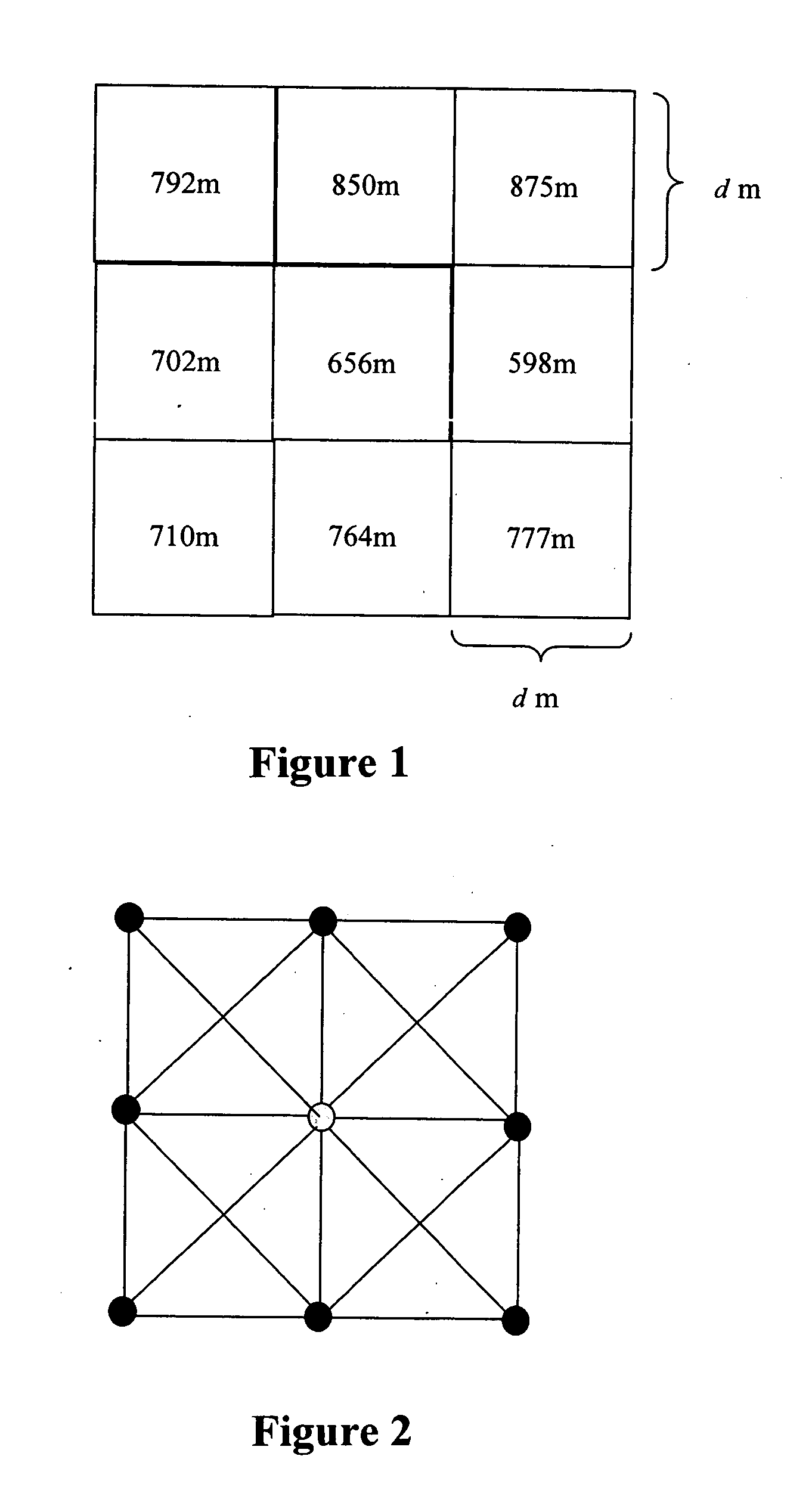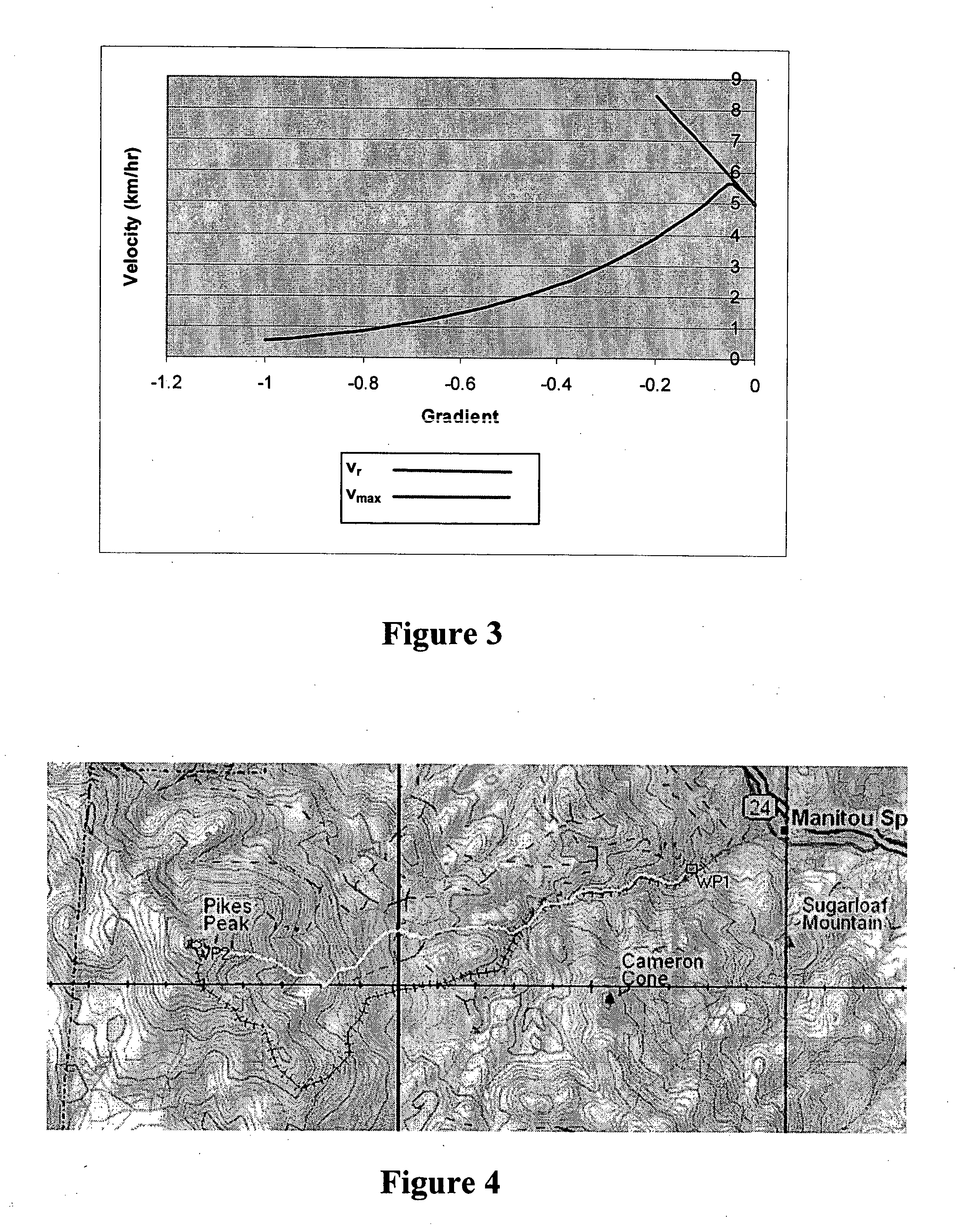Device and method for energy-minimizing human ground routing
a technology of human ground and energy-minimizing devices, applied in surveying and navigation, navigation instruments, instruments, etc., can solve the problem that no existing software automatically develops cross-country ground routes for humans, and achieve the effect of minimizing the human energy expended traveling
- Summary
- Abstract
- Description
- Claims
- Application Information
AI Technical Summary
Benefits of technology
Problems solved by technology
Method used
Image
Examples
Embodiment Construction
[0020] Artisans skilled in art will appreciate the value of illustrating the present invention by means of an example. Consider the problem of finding a ground route over rugged terrain from a starting point A to some objective point B (and by extension to additional objective points C, D, etc.) that minimizes the specific energy expended by a human or humans hiking from point A to point B (and to points C, D, etc.). FIG. 5 illustrates the process the present invention uses to produce an energy-minimizing route between user-selected points over intervening terrain for humans on foot. Each sub-process is described in what follows:
[0021] Network Creation
[0022] The present invention imports standard USGS or NIMA terrain elevation data and terrain surface type (asphalt, grass, sand, etc.) data in grid cell format (FIG. 1) and automatically converts it to terrain network format (FIG. 2). Each node in the network is assigned a terrain type and elevation from the original grid cell data....
PUM
 Login to View More
Login to View More Abstract
Description
Claims
Application Information
 Login to View More
Login to View More - R&D
- Intellectual Property
- Life Sciences
- Materials
- Tech Scout
- Unparalleled Data Quality
- Higher Quality Content
- 60% Fewer Hallucinations
Browse by: Latest US Patents, China's latest patents, Technical Efficacy Thesaurus, Application Domain, Technology Topic, Popular Technical Reports.
© 2025 PatSnap. All rights reserved.Legal|Privacy policy|Modern Slavery Act Transparency Statement|Sitemap|About US| Contact US: help@patsnap.com



